Today Current Affairs: 21st September 2021 for UPSC IAS exams, State PSC exams, SSC CGL, State SSC, RRB, Railways, Banking Exam & IBPS, etc
Table of Contents
Delhi-Mumbai Expressway:

Union Minister for Road Transport and Highways Nitin Gadkari on Friday concluded the two-day review of the work progress on the 1380-km eight-lane Delhi-Mumbai Expressway, which will reduce travel time between certain cities to 12-12.5 hours from 24 hours.
- The Union Minister for Road Transport and Highways concluded the two-day review of the work progress on the eight-lane Delhi-Mumbai Expressway.
- It will be the world’s longest highway once completed. It is expected to be completed by March 2023.
- It is a 1380-km eight-lane expressway that can be expanded to a 12-lane expressway depending on the volume of traffic.
- It will start from Haryana’s Sohna and will end around Mira Bhayander near Mumbai.
- It will have wayside amenities – resorts, restaurants, food courts, fuel stations, facilities for truckers, logistics parks.
- A helicopter ambulance service for accident victims and a heliport, which will use drone services for business as well.
- The expressway is the first in Asia and only the second in the world to feature animal overpasses to facilitate unrestricted movement of wildlife.
- It will also include two iconic 8-lane tunnels, one tunneling through Mukundra sanctuary, Rajasthan and the second will pass through the Matheran eco-sensitive zone, Maharashtra.
Sea Cucumber:

The Indian Coast Guard (ICG) has seized two tonnes of sea cucumber, a banned marine species, in the Gulf of Mannar and Palk Bay areas in Tamil Nadu.
- Sea cucumbers are marine invertebrates that live on the seafloor found generally in tropical regions. They’re named for their unusual oblong shape that resembles a fat cucumber.
- There are about 1,250 species of sea cucumber, all of which belong to the taxonomic class Holothuroidea.
- This class falls under the Echinodermata phylum, which also includes many other well-known marine invertebrates, such as sea stars, sea urchins and sand dollars.
- They are crucial to maintain the balance of ocean habitats.
Significance:
- They are an integral part of the coral ecosystem as one of the main by-products of the sea cucumbers digestion of sand is calcium carbonate and this is essential for the survival of the coral reefs.
- They act like garbage collectors of the ocean world, and they recycle nutrients, thus playing an important role in keeping coral reefs in good condition.
- Illegal Trading and smuggling since the species is high in demand across south-east Asia, mainly China, for food and traditional medicine.
- Protection:
- IUCN Red List: Brown Sea Cucumber (Endangered), Blackspotted Sea Cucumber (Least Concern), Blue Sea Cucumber (Data Deficient), etc.
Wildlife Protection Act, 1972: Schedule I.
- IUCN Red List: Brown Sea Cucumber (Endangered), Blackspotted Sea Cucumber (Least Concern), Blue Sea Cucumber (Data Deficient), etc.
- Conservation Efforts:
- In 2020, the Lakshadweep Islands administration created the world’s first conservation area – 239 sq. km – for sea cucumbers.
Rail Kaushal Vikas Yojana (RKVY):
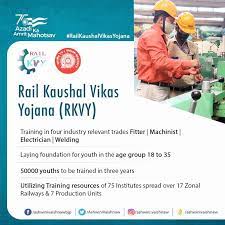
The Ministry of Railways launched Rail Kaushal Vikas Yojana (RKVY) under Pradhan Mantri Kaushal Vikas Yojana (PMKVY).
- This is a skill development programme, where training will be provided to youth with a special focus on jobs that are relevant to the Railways.
- The training will be provided in four trades viz. Electrician, Welder, Machinist and Fitter and other trades will be added by zonal railways and Production units based on regional demands and needs assessment.
- Training will be provided to apprentices under the Apprentice Act 1961.
- Objectives:
- To impart training skills to the youth in various trades to bring qualitative improvement.
- To train 50,000 candidates over the next three years.
- Eligibility:
- Candidates who are 10th passed and between 18-35 years shall be eligible to apply. Participants in the scheme shall however have no claim to seek employment in Railways on the basis of this training.
- Significance:
- The scheme will not only improve the employability of the youth but also upgrade the skills of self-employed and those who are working with contractors through reskilling and up-skilling.
Pradhan Mantri Kaushal Vikas Yojana:
- Launched in 2015, it is a flagship program of the Ministry of Skill Development and Entrepreneurship (MSDE).
- It aims to mobilize youth to take up skill training with the aim of increasing productivity and aligning the training and certification to the needs of the country.
- Owing to the success of PMKVY 1.0 wherein more than 19 lakh students were trained as against the target of 24 lakh, the scheme was relaunched as PMKVY 2.0 (2016-2020) with an allocated budget of Rs. 12000 Crores that aimed to train 10 million youth by the year 2020.
- And further PMKVY 3.0 was launched in 2021, in a bid to empower India’s youth with employable skills by making over 300 skill courses available to them.
- It envisages training of eight lakh candidates over a scheme period of 2020-2021 with an outlay of Rs. 948.90 crore.
Front-Of-Pack Labelling:
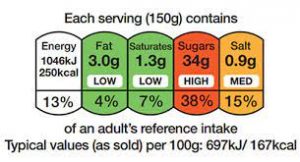
The Food Safety and Standards Authority of India (FSSAI), in 2018, released the Draft Food Safety And Standards (Labelling And Display) Regulation.
- However, even after so many expert panel recommendations and regulations, India still does not have a clear labelling or Front-of-pack (FoP) Labelling System, which can warn consumers about harmful levels of fat, salt and sugar in processed foods.
About Front-of-Pack (FoP) Labelling System:
- FoP labelling system has long been listed as one of the global best practices to nudge consumers into healthy food choices.
- It works just the way cigarette packets are labelled with images to discourage consumption.
- As India is experiencing a dietary shift, with people increasingly consuming more processed and ultra-processed foods and a burgeoning market, these factors prompt the need for FoP labelling for India.
- It will play a handy role in fighting increasing obesity and many non-communicable diseases.
- The World Health Organization (WHO) defines FoP labels as nutrition labelling systems that are presented on the front of food packages in the principal field of vision; and present simple, often graphic information on the nutrient content or nutritional quality of products.
- To complement the more detailed nutrient declarations provided on the back of food packages.
- The Codex Alimentarius Commission, an international food standards body established jointly by WHO and the Food and Agriculture organization (FAO), mentions that “FoP labelling is designed to assist in interpreting nutrient declarations”.
About the Draft Food Safety And Standards (Labelling And Display) Regulations:
- The rules mandates colour-coded labels on food items.
- The draft regulation has been brought to encourage consumers to make healthier food choices and inform them about what the product actually contains.
- The front of all packaged food items will have to display the total number of calories, saturated and trans fats, salt, and added sugar content as well as the proportion of the daily energy needs fulfilled by the food item.
- FSSAI has also changed the symbol of vegetarian food from a green circle to a green triangle to help color blind people distinguish it from the brown circle denoting non-vegetarian food.
- According to the proposed regulation, if the total amounts of calories, fats, trans-fats, sugar, and sodium per serving exceed the stipulated limits, it would be indicated in red colour.
G-20 Agriculture Meet 2021:
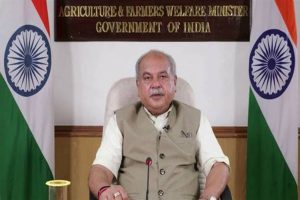
India’s Agriculture Minister addressed the G20 Agriculture meeting virtually.
- It is one of the ministerial meetings organised as part of the G20 Leaders Summit 2021 to be hosted by Italy in October 2021.
Highlights of the Meet:
- Signed a final statement named the “Florence Sustainability Charter”.
- It will strengthen cooperation between G20 members and developing countries on food and agriculture to share knowledge and help developing the internal production capacities best suited to local needs, thus contributing to the resilience and recovery of agriculture and rural communities.
- Reaffirmed their intention to reach the goal of zero hunger, which is also threatened by the consequences of Covid-19.
- Reaffirmed the commitment to achieve food security in the framework of the three dimensions of sustainability: economic, social and environmental.
India’s Stand:
Focus on Traditional Food:
- Emphasised on re-introducing traditional food items including millet, other nutritious cereals, fruits and vegetables, fish, dairy and organic products in the diet of the people.
- Their production has been phenomenal in India in recent years and India is becoming a destination country for healthy food items.
- The United Nations (UN) has accepted India’s proposal and declared 2023 as the International Year of Millets and urged the G20 nations to support the celebration of the millet year to promote nutrition and sustainable agriculture.
Biofortified Food:
- Biofortified varieties, which are the source of a staple diet rich in micronutrients, are being promoted to remove malnutrition.
- About 17 such varieties of different crops have been developed and released for cultivation.
Water Resource:
- India has also taken steps to increase the optimal use of water resources, create infrastructure for irrigation, conserve soil fertility with balanced use of fertilizers, and provide connectivity from farms to markets.
Indian Agri-Sector in Covid:
- Indian agriculture has achieved great success after the country’s independence, and the sector also remained unaffected even during the Covid pandemic.
India Resolved to:
- Continue working together to achieve the Poverty Reduction’ and ‘Zero Hunger Goal as part of the sustainable development goals.
Cooperate in research and development as well as exchange of best practices to enhance productivity.
Humboldt Penguins:
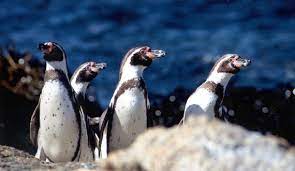
Last week, Mumbai’s Byculla Zoo announced the addition of two new Humboldt penguin chicks this year. The two join seven adult Humboldt penguins at Byculla Zoo — Popeye, Flipper, Bubble, and the new parents.
- Humboldt penguins are a medium-sized species among at least 17 species.
- The largest, the Emperor penguin, stands at over 4 ft tall while the Little penguin has a maximum height of 1 ft. Humboldt penguins have an average height of just over 2 ft.
- Penguins are divided into six genera (see table). The Humboldt penguin (Spheniscus humboldti) belongs to a genus that is commonly known as the ‘banded’ group. Humboldt penguins are endemic to the Pacific coasts of Chile and Peru.
- They are so named because their habitat is located near the Humboldt Current, a large oceanic upwelling characterised by cold waters.
- Humboldt penguins have large, bare skin patches around their eyes, an adaptation to help keep them cool.
- The Humboldt is one of the most popular zoo penguins due to its ability to withstand warmer climates.
Parker Solar Probe:
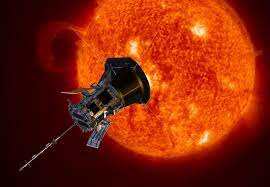
Scientists using data from NASA’s Parker Solar Probe have assembled the most complete picture yet of the inner structure and behavior of the large cloud of space dust, known as the zodiacal cloud, that swirls throughout the solar system.
They found three dust populations in the cloud:
- Most of the grains are being slowly pulled in toward the Sun (alpha-meteoroids).
- The second population is generated as grains in the swirling cloud collide, creating fragments so small that they are pushed out of the solar system in all directions by pressure from sunlight (beta-meteoroids).
- A third group, probably created when a “tube” of cometary debris collides with grains from the first two populations, is scattered out in a distinctive wedge shape.
- The sources of zodiacal clouds/interplanetary dust particles (IDPs) include at least: asteroid collisions, cometary activity and collisions in the inner Solar System, Kuiper belt collisions, and interstellar medium grains.
- It scatters sunlight in a way that can be seen with the naked eye, but only on very dark, clear nights, as moonlight or light from cities both easily outshine it.
- Thickest near the sun and thinnest near the edges of the solar system, the zodiacal cloud looks smooth to the naked eye, but infrared wavelengths reveal bright streaks and ribbons that can be traced back to their sources: comets and asteroids.
About the mission:
- NASA’s historic Parker Solar Probe mission will revolutionize our understanding of the sun, where changing conditions can propagate out into the solar system, affecting Earth and other worlds.
- Parker Solar Probe will travel through the sun’s atmosphere, closer to the surface than any spacecraft before it, facing brutal heat and radiation conditions — and ultimately providing humanity with the closest-ever observations of a star.
- In order to unlock the mysteries of the sun’s atmosphere, Parker Solar Probe will use Venus’ gravity during seven flybys over nearly seven years to gradually bring its orbit closer to the sun.
- The spacecraft will fly through the sun’s atmosphere as close as 3.9 million miles to our star’s surface, well within the orbit of Mercury and more than seven times closer than any spacecraft has come before.
Parker Solar Probe has three detailed science objectives:
- Trace the flow of energy that heats and accelerates the solar corona and solar wind.
- Determine the structure and dynamics of the plasma and magnetic fields at the sources of the solar wind.
- Explore mechanisms that accelerate and transport energetic particles.
Isothermal Forging Technology:

Isothermal forging is a closed-die process in which the dies and the workpieces are heated to the same temperature, so that forming can take place without loss of temperature in the workpiece.
- It’s a preferred process for forming engineered parts, including jet-engine and other aerospace components in high-density lightweight alloys.
- In this process, the workpiece is formed to shape at a slow rate and at a temperature almost equal to that of the heated die.
- The long forging time, alongside forces exerted by the die, help to form an almost ‘ready to use’ component needing minimal supplementary machining.
- This is a crucial technology for establishing self-reliance in aeroengine technology.
- With this development, India has joined the league of limited global engine developers to have the manufacturing capabilities of such critical aero engine components.
National Trust:

The Ministry of Social Justice & Empowerment had recently organised meetings with officials and other stakeholders of Jammu & Kashmir and Ladakh for implementation of National Trust Act, 1999.
- This act looks into the welfare of people with autism, cerebral palsy, mental retardation and multiple disabilities.
- The Act also provides for the setting up of the National Trust.
About the National Trust:
- The National Trust is a statutory body of the Ministry of Social Justice and Empowerment, Government of India.
- It was set up under the “National Trust for the Welfare of Persons with Autism, Cerebral Palsy, Mental Retardation and Multiple Disabilities” Act.
- Its mandate is to discharge two basic duties – legal and welfare.
- The objectives of the National Trust in particular are:
- To enable and empower persons with disability to live as independently and as fully as possible within and as close to their community as possible;
- To facilitate the realisation of equal opportunities, protection of rights and full participation of persons with disability;
- To extend support to its registered organisations to provide need-based services; and
- To evolve procedures for appointments of guardians and trustees for persons with disabilities.
The International Olympic Committee (IOC) Has Suspended North Korea:
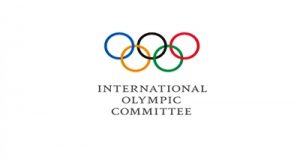
The International Olympic Committee (IOC) has suspended North Korea until the end of 2022 after it failed to send a team to the Tokyo Games.
- The suspension means the country will miss out on the Beijing Winter Games.
- North Korea did not send a delegation to the Tokyo Games, saying it wanted to protect its athletes from Covid-19.
- IOC President Thomas Bach said the IOC reserves the right to make decisions on any individual North Korean athletes who qualify for Beijing 2022 and to reconsider the duration of the country’s suspension.
- At Rio Olympics 2016, North Korea had won two Golds, three Silvers and two Bronzes.
Nuclear-Powered Submarines:
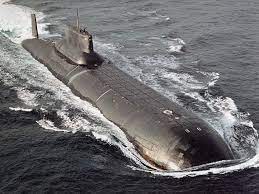
The US and UK are set to provide Australia with the technology to deploy nuclear-powered submarines, as part of the first initiative under the new trilateral security partnership AUKUS.
- A nuclear-powered submarine, as the name suggests, is powered by a nuclear reactor but it is not a nuclear weapon.
- Every nuclear-powered submarine draws from its own miniature nuclear reactor onboard, which is typically fuelled with uranium.
- For such a reactor to work, uranium has to be ‘enriched’ to contain 50 per cent of a key isotope, uranium-235.
- Natural uranium consists of approximately 99.3 per cent of the isotope uranium-238 and only 0.7 per cent of uranium-235. The process of enrichment can be carried out through gaseous diffusion, gas centrifuges or laser isotope separation.
- Nuclear-powered submarines do not have the same limitations that face conventional submarines on weapons storage, speed and endurance. They can stay completely submerged for many months, limiting the opportunities for detection by adversaries.
- Only six nations own and operate these submarines currently: China, France, India, Russia, the UK and the US.
Planet Nine: Study

The study proposes “Planet Nine” exists beyond Neptune and is six times the mass of Earth, according to reports.
- The scientists first proposed Pluto had a replacement in a controversial study that came out in 2016 that said the clustering of asteroids and comets and other objects that orbit the sun in the Kuiper Belt suggests the existence of a large planet.
- The new study also includes a “treasure map” of the planet’s likely orbit that the scientists said lasts around 7,400 Earth years and is closer to the Sun than the 2016 study found.
- A closer orbit to the Sun would make the planet brighter and easier to see.
- Planet Nine would probably be cold gas giant like Neptune, the farthest known planet in a Solar System from the Sun. Neptune has a nonsolid surface made up mostly of hydrogen, helium, and methane, according to NASA.




